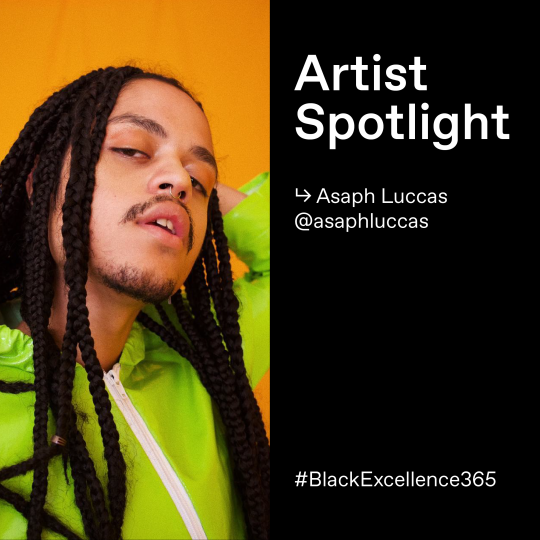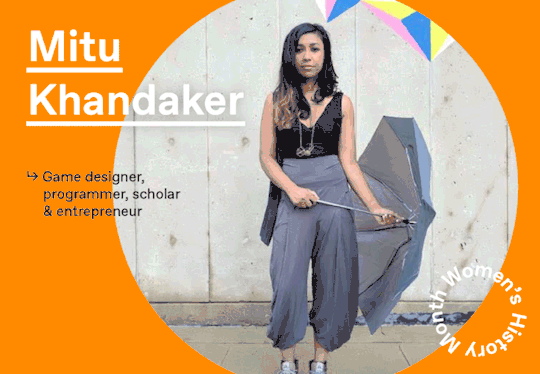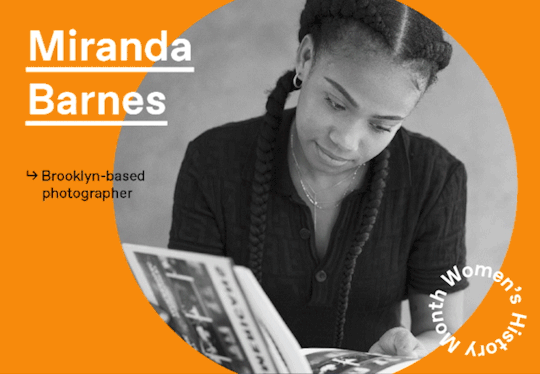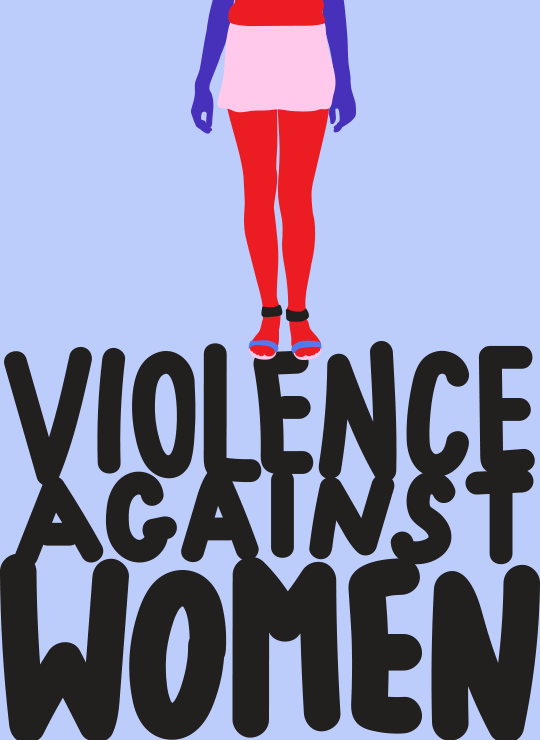Don't wanna be here? Send us removal request.
Link
300mbmovies – Hollywood, Bollywood, South Indian, Tamil, Telugu, Malayalam, Punjabi, Hindi dubbed, Full movies, Tv serials Download
#worldfree4u#bollywood#hollywood#south indian#hindi dubbed movies#movies#300mbmovies#tamilrockers#9xmovies#filmywap#sahoo#tamil#telugu#punjabi#khatrimaza#viral
2 notes
·
View notes
Link
Top Highest Paying Niche ideas To Increase Your Adsense Earning
0 notes
Link
0 notes
Link
0 notes
Link
0 notes
Link
0 notes
Link
0 notes
Link
0 notes
Link
0 notes
Link
0 notes
Link
0 notes
Photo

We’re back with another #BlackExcellence365 Artist Spotlight! Meet Asaph Luccas (@asaphluccas), a Black Brazilian portraiture artist who has been uploading his art to Tumblr since 2012 (!). We got to talk to him a bit about his career trajectory and Negritudes Brasileiras, his documentary about colorism in Brazil. Read on below.
Your art focuses on highlighting dark-skinned women and men in São Paulo. How important is it for you to highlight the Black diaspora as an artist?
Actually, I try to portray a lot of the diversity of blackness. I mean, not only in shades but in shapes, sexual orientation, hair, style…I love drawing people and with time I saw how powerful art can be so I started adding more and more variety of people in what I do. My art helps me to understand and be proud of who I am and by that, I hope it catches on the people seeing it.
Tell us a little bit about yourself and how you came to be an artist and filmmaker? How has Tumblr been a place for you to find your voice?
I’m Asaph, a 24 years old Brazilian multidisciplinary artist. At heart I am a visual creator, painting what I live through my lens. It’s really awesome to answer that question because I started posting my art on Tumblr when I was 17! Tumblr had a huge influence on my trajectory as an artist because it was the place where I connected my art with other people. You can actually see all my growing as an artist and as a person of color scrolling through my archive. First, I used to draw mostly white characters. I created what people made me believe was the “art beauty” and that came with years and years of self-loathing and trying to fit into white standards. It only started to change when I connected with my roots and started studying more about racism in Brazil. You see, we are more than 54% of the population but when you turn on the TV there are no black TV hosts, no black protagonists in the telenovelas. So I stopped trying to portray something that I’m not, something that doesn’t represent the reality of the place I live,.
What communities do you identify with both online and IRL?
I’m black, a really femme gay boy and I lived almost my whole life on the Brazilian periphery. This holds such an important part of who I am. Most of my friends are also black and part of the LGBT community and we started a film collective named Gleba do Pêssego and get to create films together talking about marginalized identities that usually we don’t see being represented here. We as queer individuals get the opportunity to create our own families and also create our own references, so my support system is basically friends and other Brazilian artists doing great things right now, such as Edu Reis, Oliv Barros, and Ione Maria.

How did you come up with your featured piece and how might this relate to the broader conversation surrounding the #BlackExcellence365 campaign?
I started my Black I-d series because I didn’t have [any] other illustrators to look up to and inspire me to draw black characters when I started. I wanted to inspire younger artists (including myself) to know that drawing black people is beautiful and YES, we can be artists! As a light-skinned black person living in Brazil, a country where most mixed people spend a lot of their lives trying to pass as white and where there’s almost no representation of the variety of the black experience, I had to find a way to say “hey, there isn’t one way of being black, we came in a lot of shades, shapes, colors, and souls and we need to be represented!” and I’m so happy that I got to inspire people with it.
Your documentary Negritudes Brasileiras examines the conversation around racial identity and colorism in Brazil. Why was that documentary important for you to create?
In our journey we make films bringing light to marginalized identities and this year we got to make a documentary with Nátaly Neri, one of the biggest voices in the young black community right now, about racial identification since Brazil is such a racially mixed country. I got to say everything that my paintings couldn’t, exploring my art in many ways, and I’m proud of what this represents.
What are some of the challenges you face as an artist and a filmmaker?
Support. Definitely support. Emotionally because when you grew up poor you’re not allowed to dream about being an artist, about being a filmmaker. Education in those areas is so expensive that must of us can’t afford it and we have to teach ourselves how to do everything. By not being part of the academy, a lot of times people don’t see us as real creators. Financially because I have to work on other things to provide for myself because it’s so hard to live as an artist/filmmaker here and that means I don’t have the time to invest as many other artists have.
Thanks for chatting with us, @asaphluccas!
Tumblr artists, what kind of challenges have you faced when making your art? Can you relate to Asaph? Make a post, tag it #BlackExcellence365, and share it with the community.
3K notes
·
View notes
Photo

#BlackExcellence365 Artist Spotlight: Cat Frazier (@animatedtext)
Oh, buddies, have we got a special interview for you today. You may not know her, but you definitely already love it. It’s @animatedtext! We were able to ask this walking internet legend about her art and what it’s like being a Black woman on the internet when everyone assumes you’re a white male—and why it’s so important to correct those assumptions. Read on, reader.
Before we start this interview, we’d like to say how honored we are to interview the Queen of GIFs. Tell us: Who is the mastermind behind @animatedtext on Tumblr?
I created @animatedtext in 2012 as a space to share jokes and practice making 3D text. Shortly after that I started taking requests from followers. So you can say the 280K plus people submitting requests are also the masterminds.
In recent interviews you’ve mentioned that people always think you’re a white, straight man creating the GIFs. Why is it important to be visible as an openly gay Black woman?
I’ve been coming out my whole life. The first time I came out was age 13 when I told my family I was gay. The last time I came out was yesterday when my Uber driver asked if I had a boyfriend. Me being open about being a black lesbian is like being open about what I ate for breakfast. It’s the same way for me online. At the beginning of running @animatedtext I used to get hundreds of DMs from people saying “bro you’re amazing” or “why are you making jokes about being a woman when you’re a man?” Not everything I make is tied back to my identity. So now my bio essentially says “a black lesbian made these.” The added bonus of being out is representation. For some people it won’t matter that I’m a black gay woman. But for some it means everything to know that their favorite popular blog is run by someone like them.
What communities do you identify with both online on Tumblr and IRL?
On Tumblr I mainly identify with the net art community and calligraphers. In my mind, @animatedtext will always be a part of the 2012 Tumblr transparent community where people who weren’t designers were making GIFs for fun. My personal life is significantly gayer. I actively volunteer at my local LGBT Center and participate in a lot of queer art shows.
What are some of the challenges you face when creating GIFs or running your blog?
Balancing time. I’m fortunate that @animatedtext has become so successful and gives me opportunities outside of my blog. Unfortunately, that creeps into the time I’d like to spend making GIFs or talking to my followers. The other challenge is presenting my gifs in new ways. Recently I’ve started to play around with lyric videos and animated text stock videos. Seeing my work featured on Broad City showed me that there’s no limit.

Talk to us about this original piece for the #BlackExcellence365 campaign. How does this emulate Black Excellence for you?
This piece is a joke about strong black woman quotes. A lot of times black women are expected to keep it together no matter what. “Keep your head up Queen” and “be a strong black woman” are positive mottos that can become overwhelming. Sometimes you gotta drop your crown and lay your head on the keyboard. Black excellence just means being true to yourself. For me, that means not taking myself too seriously and encouraging other people to do the same.
Why is it important that people continue to make an effort showcase work done specifically by Black artists?
It’s important to continue to showcase Black artists because we offer a perspective that comes from an experience of anxieties and a feeling of otherness. Both of which are characteristics of great art.
What are the common asks in your inbox?
A lot of people ask me to make GIFs that they can use to ask their crush out. The internet is also going through a cowboy phase so I get many asks with the word yeehaw in it.

We’d suggest you follow @animatedtext to see her latest GIFs twirl and twist on your dashboard as she posts them, but we know you’re already following her. What a wise choice.
4K notes
·
View notes
Text

Women’s History Month Spotlight: Stefania Tejada
In honor of #WomensHistoryMonth, we’ve connected with some amazing women on Tumblr from different industries and backgrounds to discuss how their perspective shapes their art, work, family, activism, and more. First up is Stefania Tejada (@stefaniatejada), a Colombian artist and illustrator whose work often speaks on taboo subjects women face.
Your latest series, “The Birth of Venus,” explores how women are confronting the world. How did this series start and why was it important for you to create this series?
All of my work is really personal and it’s a response to very specific moments and transitions. I grew up in a time where it wasn’t okay to ask major questions about your body or things you felt that are completely normal. There was this huge taboo about everything: sexual education, menstruation, pleasure, depression, anxiety, homosexuality, etc. I studied in an all-girls high school with nuns so we really didn’t have any sort of sexual education. It was all presented as some sort of sin, and in general, parents didn’t feel comfortable discussing the subject either.
So in some way, “The Birth of Venus” shows the woman that I am today. I think about the girl I used to be when I was very little, very shy about speaking my mind or pursuing something I really wanted. But I’ve been lucky. I’ve met very important people in my life who picked my brain, made me think and understand that I am me, I deserve to live the life I want, the life I choose to have. That I can have my own opinion, that I must speak up, respect myself and respect others. I learned about acceptance and forgiveness. I learned to always stay curious, to work hard, and dream big. I feel very lucky to have my family and friends.

Can you talk to us about your featured artwork and the story behind it? We’re in awe.
This piece was made after Dolce & Gabbana’s statement towards Chinese culture. I was amazed and shocked [by] this way of thinking. For me, understanding other people’s culture is so fascinating. I try to live in different places and learn as much as I can. You need to understand somebody else’s past, present, and future before judging someone.
As Colombians, we have always been generalized for the past. Many of us were scared to try to change things because people were trying to survive. When I was little I remember the Guerrilla coming into our town and the four of us hiding under the bed listening to gunfire right outside our door. The mistakes of a few became the mistakes of all of us. And that happens with so many cultures, but it’s up to us to teach others about respect, acceptance, and forgiveness. It all comes from education.
Could you imagine what we could do if we were to stand together? All of the positive things we could do? There could be a future for all of us. A future we would all be proud of.
We live in a time where it’s important to showcase all identities of women and their contributions to society. How does your art encompass that?
I believe every person is a piece of art. The elements that shaped their personalities, the stories that triggered something inside of them and motivated them to be who they are now—I called them treasures. I’ve watched so many documentaries about people and movements: Nina Simone, Whitney Houston, She’s Beautiful When She’s Angry, The Rolling Stones, David Bowie, Queen, Obama, The Defiant Ones, Steve Jobs, 2Pac, you name it.
I believe you can learn from anyone. I chose to focus on women empowerment because I had to find a way to empower myself because it’s something I needed at the time and it helped me believe in myself. And along the way women I didn’t even knew started writing to me about feeling the same way thanks to my work. In my mind we are all together, all these women that I draw are part of who I am. Some of them have shaped my future, some of them have sacrificed themselves for us so that we can speak up, vote, marry whoever we want, choose whether we want to have children or not. We owe them everything and this is my way of continuing their legacy. To live a life that has meaning.
Thank you for sharing your work with us, @stefaniatejada ! Tumblr, have you made any art for Women’s History Month yet? Show it off by making a post and tagging it #WomensHistoryMonth.
This interview has been condensed and edited.
3K notes
·
View notes
Photo

Women’s History Month Spotlight: Mitu Khandaker
Mitu Khandaker is living the dream. She had a hobby and turned it into a career where she can make meaningful change. As a game designer, she holds a PhD on the aesthetics of interactivity in videogames and most recently founded a new studio, Glow Up Games. Her and her team are motivated to tell stories through mobile games and AI. If you’re into gaming, you’ll want to read our interview with her below.
Tell us a little bit about yourself and how you got into the gaming industry.
I’m a game designer, programmer, scholar, and entrepreneur. I’m a professor at NYU Game Center and CEO and Co-Founder of new studio, Glow Up Games. I have a PhD in the aesthetics of interactivity and designing for virtual reality, and I do consulting across a range of creative and technical projects across games, AI, and immersive storytelling
I think that I have the typical story [after] I found out that creating games was an actual job. That actually happened thanks to an episode of my fave TV show when I was 13, The X-Files, which featured a storyline featuring a female “entertainment software developer’”—who, incidentally, happened to be a woman! Since then, I knew I wanted to do that, but the route I took was also typically a little unusual and eclectic. I studied Computer Engineering to Masters level at university (my other aspiration was to build cool robots), and for my final project, I designed a videogame and controller which used stress levels as input. Then I was offered the chance to do a PhD in game design and creative technologies at the University of Portsmouth, and while I was doing that, I was building all kinds of games and projects—from a location-based games startup I worked on briefly, to my first indie hit, Redshirt, which sparked my interest in social simulation and AI.
I was then part of the founding team of a game AI tools company called Spirit AI, until more recently, when I left to start a new studio, Glow Up Games. [Now I] focus on telling beautifully crafted systemic stories through games, mobile, AI, and emerging tech, and, particularly, building games for a diverse and underrepresented audience, by a diverse and underrepresented and underestimated team.
Games are such an interactive medium. How do you think game developers and their teams can create a positive, inclusive shared experience?
Games are indeed interactive, but also, they’re always about telling stories, whether through implicit systems or more explicitly. As always, I think that the key to telling better stories lies in tapping into the wider wealth of human experience. That means building more inclusive and diverse teams.
How do you see gender disparity occurring in the gaming industry? How can we change the male-dominated narrative?
Women have always been in games, but they perhaps haven’t been afforded the same platforms as our male counterparts. We need to shout about the accomplishments of women throughout gaming history, for one thing. Another is to create cultures within gaming companies where, as women and minorities, we’re truly included. For me, as a woman of color, that means building our own structures—one of my missions with Glow Up Games!
What advice would you give to aspiring women who are just starting out or wanting to join the industry?
Find mentors in people who are women or non-binary. Find peers, allies, and find people who will remind you that you’re not alone in this. I can’t underline strongly enough the value of having a good network of support.
Thanks for the interview, Mitu!
Tumblr, like what you see? Stay tuned to @gaming all month long for more interviews with women in the gaming industry.
2K notes
·
View notes
Text

Women’s History Month Spotlight: Miranda Barnes
Our Women’s History Month features continue! Meet photographer Miranda Barnes (@mirandabarnes ), a Caribbean-Anglo American photographer hailing from Brooklyn. Her unique style has been seen in major publications like The New York Times, NY Magazine, Vogue Magazine, Teen Vogue, and so many more. Now you get a chance to learn just what makes her tick.
Your work in the West Indian Parade series, Skate Kitchen, and Sarae & Sarai is amazing. What motivates you to focus on telling the stories of Black women?
Thank you! It’s important because for so long our stories have largely been told from a white and male perspective and have been the only way our narratives have been told. For me, it’s important to break stereotypes that have been placed on us by photographing us living and working, even if it’s mundane.
What has been one of your biggest accomplishments as a photographer?
One of the biggest accomplishments thus far has been photographing historical and sensitive assignments. The biggest one, however, was my coverage of Dr. Martin Luther King Jr.’s 50th anniversary of his assassination for The New York Times. It made A1!
How can people continue to support more women of color photographers?
I think it is important to first acknowledge that womxn photographers have been, historically at a disadvantage. This is even more so for Black womxn photographers. However, it’s important to understand the idea behind reclaiming narratives and it’s very exciting to see this slow, but more awareness towards the inequality that has plagued industries for so long. Reclaiming narratives are crucial and I try to view my experiences as a Black woman as an advantage. Support can be as simple as sharing a website, but also buying prints or investing in a photographer.
Give yourself a little gift today and follow @mirandabarnes . Your dashboard will be better off for it.
2K notes
·
View notes
Photo

Women’s History Month Spotlight: Gabriella Sanchez
Oh, hello. Looking to celebrate an incredible WOC artist for Women’s History Month? Let us suggest one of our Tumblr @creatrs, Gabriella Sanchez (@thatnoisegallery). This LA-based Mexican-American artist is one you’re going to want to pay attention to. In the interest of celebrating women and how they impact their world, we’ve touched base with her to discuss how feminism intersects with her work. Read on, reader.
Let’s start by telling us a little bit about yourself. How did you become the artist that you are today?
That’s a big question in which the true answer is that it’s a result of all my experiences and interactions that are too many to list here. The more direct but partial answer is that I went to college without knowing what I wanted to do and started taking art electives until those became the only classes I was taking. I was really attracted to the freedom of being an artist—the idea that you could spend your time seeking out whatever ideas interested you and then turn into something that people could engage with and it could be under this expansive umbrella of art. That was and still is thrilling to me.
As a Mexican-American woman, your experiences and intersections in race, gender, and socioeconomic status all play a part in your work. Why do you think it’s important for art spaces to exhibit more work by women of color?
I would say that yes, the things you mentioned above play a role in my work, but that’s because everyone’s personal experiences play some role in their work even if they aren’t acknowledged. It’s just framed in a different light when a person from any marginalized group creates art. Specifically, in painting, the work is an assertion of what an artist thinks is beautiful or interesting or worth looking at and that inherently is a message and a showcase of their viewpoint. An artist who paints a flower versus an artist who paints a bus bench with graffiti are both painting what they want you to see. In that sense, the work could be seen as the same. They just get framed in a different light. That’s why it’s important for artists of marginalized groups to be included in these art spaces, so that our context of viewing work gets larger so we can really see the work without knee-jerk biases blocking our ability to fully engage with a work.

Let’s talk about your featured artwork. Women of color and trans women are people most affected by violence. Talk us through the process of this piece and why it’s important?
The idea behind this piece is that this is a collective issue. Not an issue that is just on the shoulders or survivors or only women, but everyone. Only with that mentality will we be able to make moves towards a future where women are safe and we can all move forward [with] equality and equity for everyone.
If you want more of Gabriella’s art, follow her at @thatnoisegallery. If you want more interviews with women making an impact in their fields, stay tuned to @action! We’re celebrating Women’s History Month all month long.
4K notes
·
View notes